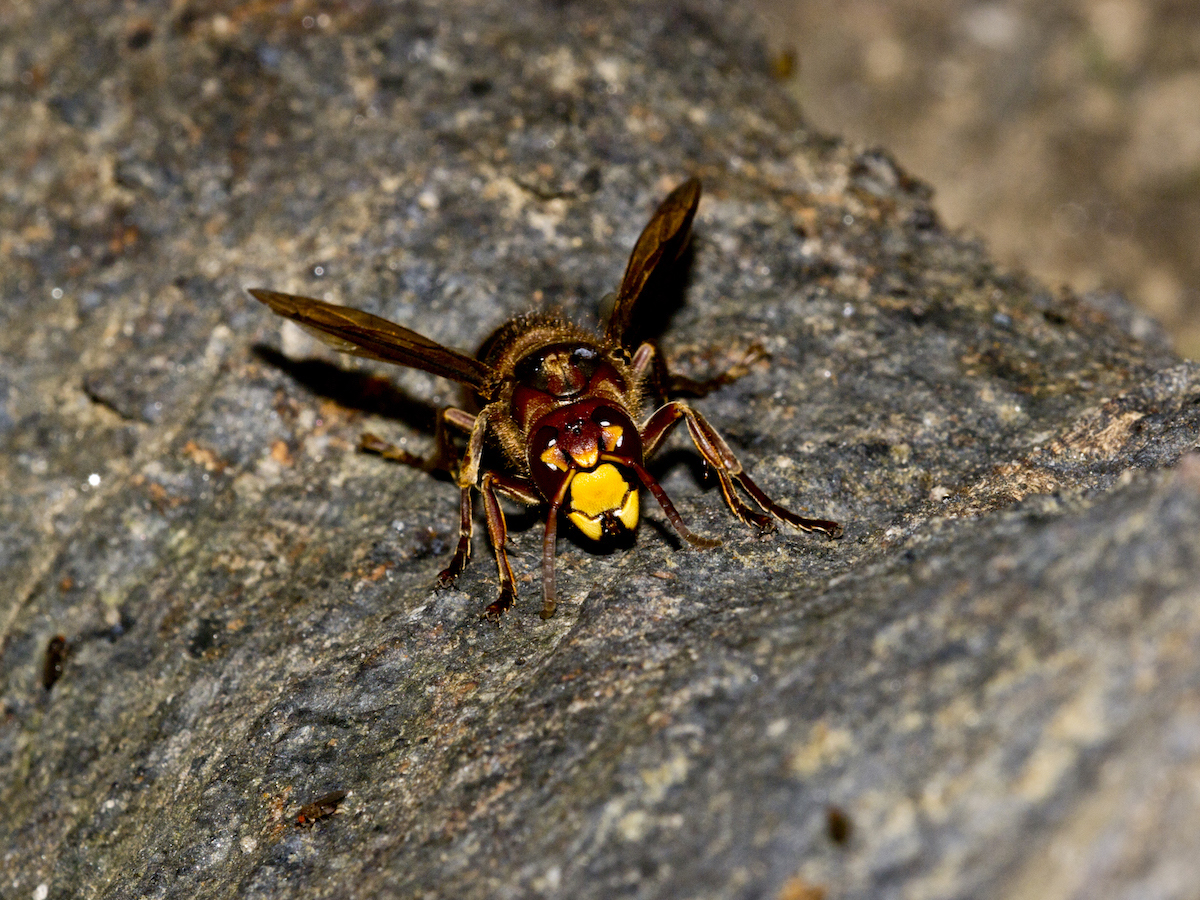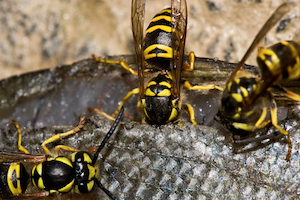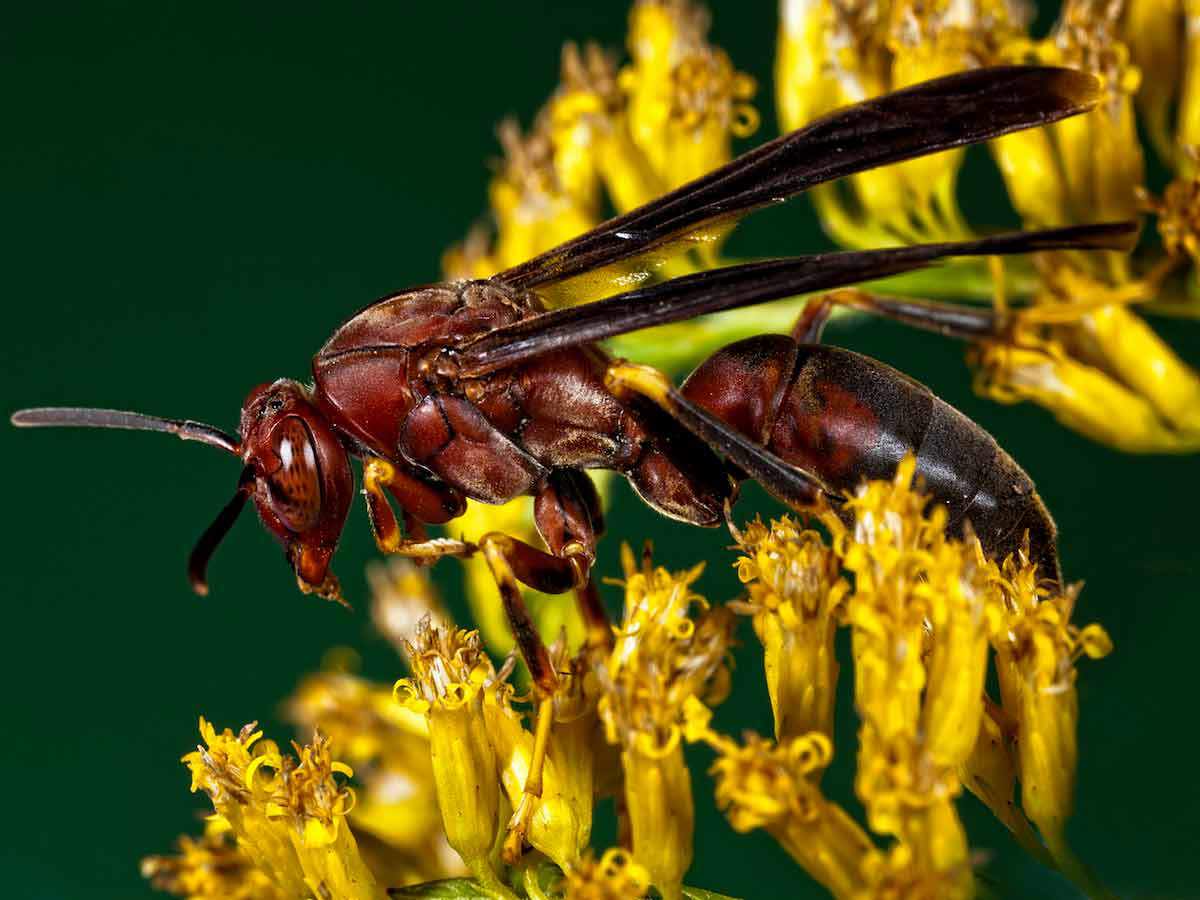Bald-faced Hornets Dolichovespula maculata
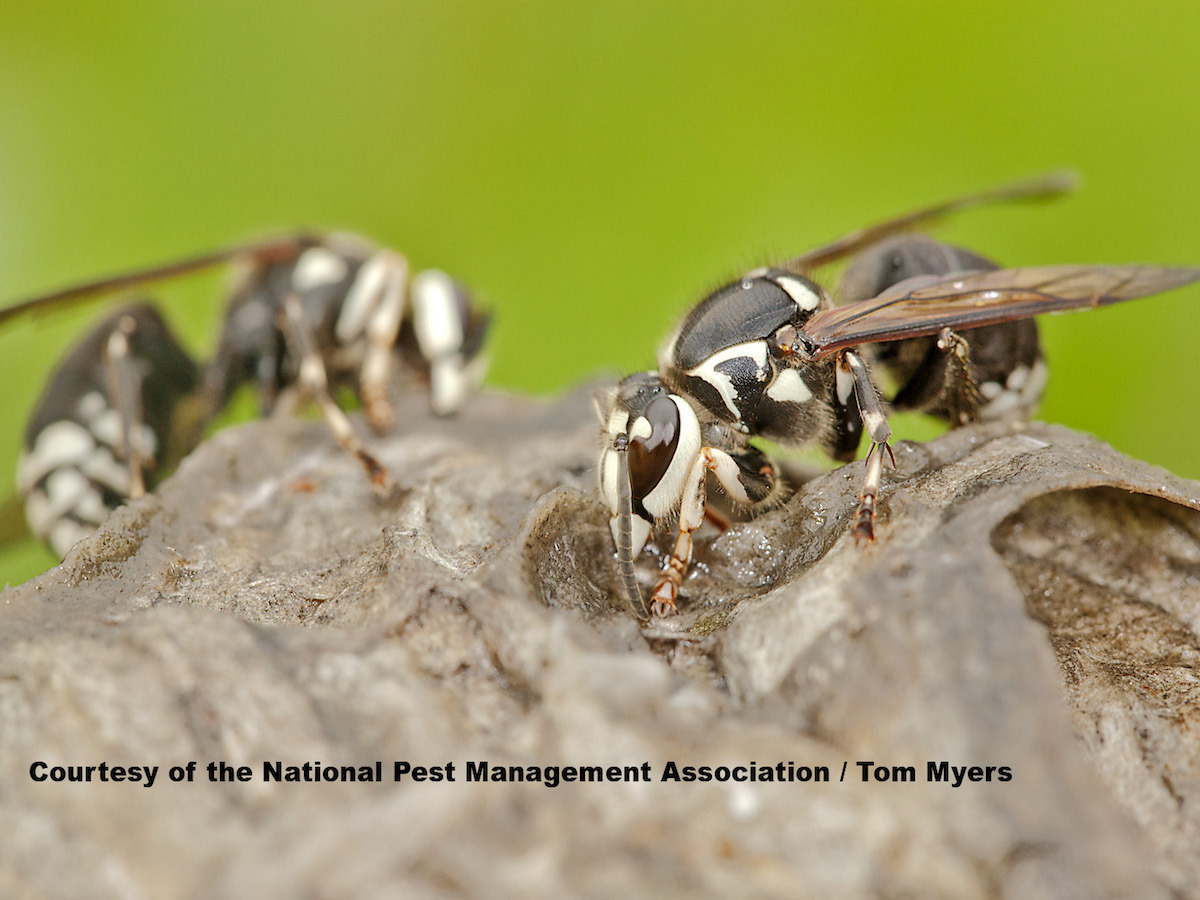
Bald-faced Hornets Identification
Color: Black with a white pattern on most of the face
Size: 1/2 – 5/8” (12-15mm); queen 3/4” (18-20mm)
Legs: 6
Antennae: Yes
Shape: Long, wasp-like
Region: Found throughout U.S.
What is a Bald-Faced Hornet?
Did you know the bald-faced hornet is not actually a hornet? It’s a relative of the yellowjacket and other wasps. It gets its common name from its largely black color and mostly white face and is commonly referred to as a hornet because of its large size and aggressive nature. These black and white wasps known as bald-faced hornets can produce a nasty hornet-like sting. Read on to learn more.
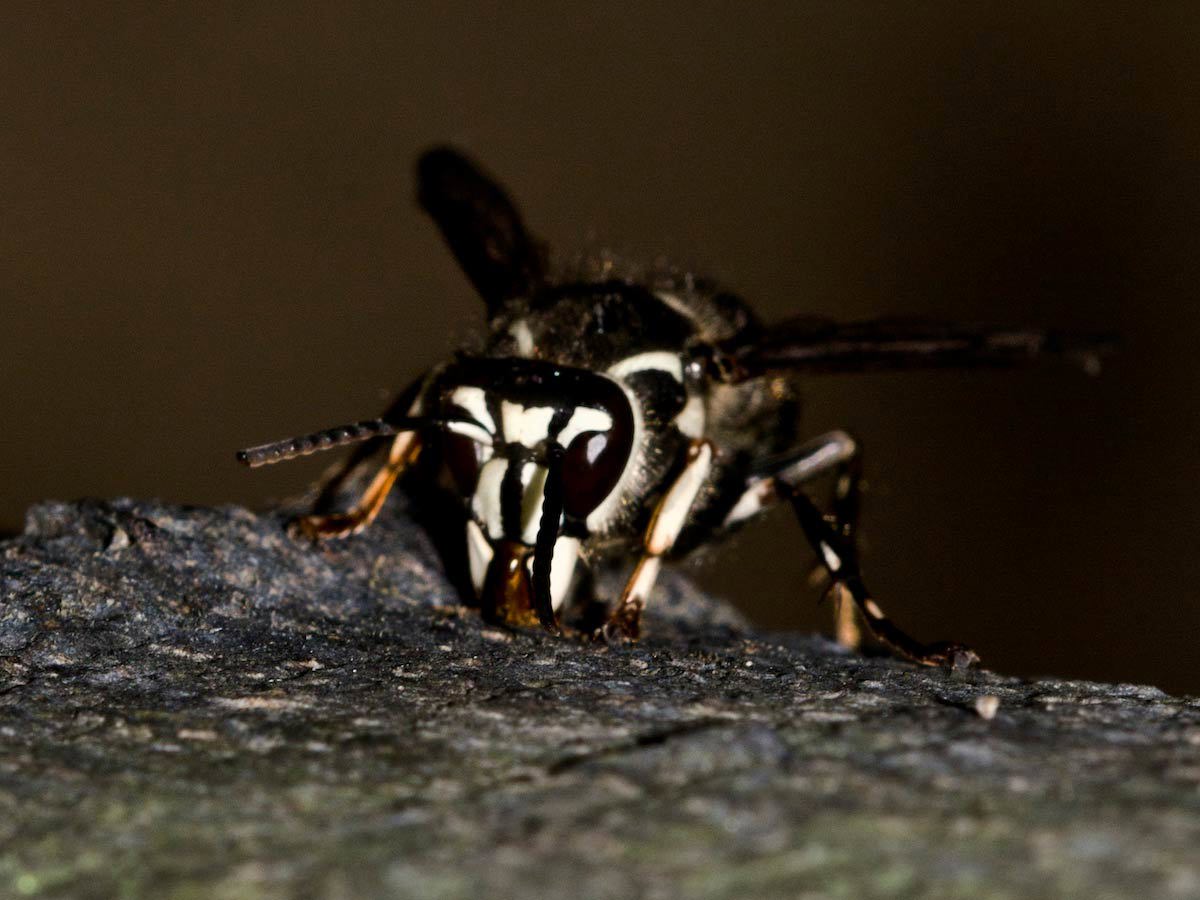
What Do Bald-Faced Hornets Look Like?
If you see what looks like a black and white wasp, you may be looking at a bald-faced hornet. They greatly resemble their yellowjacket relatives, but with black bodies and a predominantly white-patterned face. They also have two slanted lines running from their midsection towards their head and on the latter part of their abdomen. Like yellowjackets and paper wasps, the surface of their upper-midsection almost looks triangular from the side.
Queen bald-faced hornets are larger in size than their adult-worker counterparts. Their aerial nests are grey and paper-like, but they are enclosed unlike the open cone structure of other stinging hornets and insects, like yellowjackets and paper wasps.
Bald-faced hornets are aggressive and will attack anyone or anything that invades their space. This is unlike other stinging insects that may only rarely sting when they feel extremely threatened. This makes bald-faced hornet removal, which should be left strictly to a professional for safety, somewhat difficult. These black and white wasps have smooth stingers, so they can sting over and over again, whereas other stinging insects, like honey bees, are only able to attack once before their stinger falls off.
Bald-faced hornet stings carry venom that makes the stings hurt, itch and swell for about 24 hours. Humans are at the same risk of allergic reactions from bald-faced hornet stings as with other insect stings.
Bald-faced hornets build paper nests at least three or more feet off of the ground, usually in trees, shrubs, on overhangs, utility poles, houses, sheds or other structures. These nests can be as large as 14 inches in diameter and more than 24 inches in length.
Bald-faced hornets are social insects and are most visibly active during the day. They live in colonies that may contain between 100 and 400 members at their peak.
Bald-faced hornets usually appear in late summer when populations are largest. Specifically, males emerge from unfertilized eggs and impregnate the new females for the next season in the end of the summer. The inseminated insects are the only ones that overwinter when the weather cools, while the remaining members of the nest die off, and the process repeats the next spring and summer. Unlike other stinging insects, bald-faced hornets do not reuse their nests season after season—the new members will rebuild them each time from new materials.
You will most easily recognize a bald-faced hornet infestation by the presence of a nest, likely suspended above the ground. You will also find worker bald-faced hornets flying around the nest and nearby area.
Recognizing these black and white wasps and avoiding contact with them is key to preventing bald-faced hornet stings.
The first step is prevention. Homeowners should seal any tiny openings like cracks where these wasps would be able to enter when seeking shelter. Keeping food covered, especially when outdoors, will also help keep these insects at bay and potentially avoid a bald-faced hornet sting.
When spending time outside, people should avoid wearing strong fragrances and opt for unscented hygienic products. Likewise, they should wear shoes that cover and protect their feet from rogue hornets.
If you find a bald-faced hornet nest on your home or property, do not attempt to remove it on your own, as this can aggravate the colony and cause the hornets to sting. DIY pest control should be avoided at all costs. Instead, contact a licensed professional about proper removal to avoid the risk of bald-faced hornet stings. A professional will likely examine the nest during the daytime and then remove the nest at night—when the majority of the hornets are in their shelter—to maximize removal.
If you suspect an Argentine ant infestation in your home, the best course of action is to contact a licensed pest control professional. They will conduct a thorough inspection to identify the full extent of the problem. Once the situation is properly identified, the appropriate control measures can be taken.
You can find one with the helpful zip code search below.


